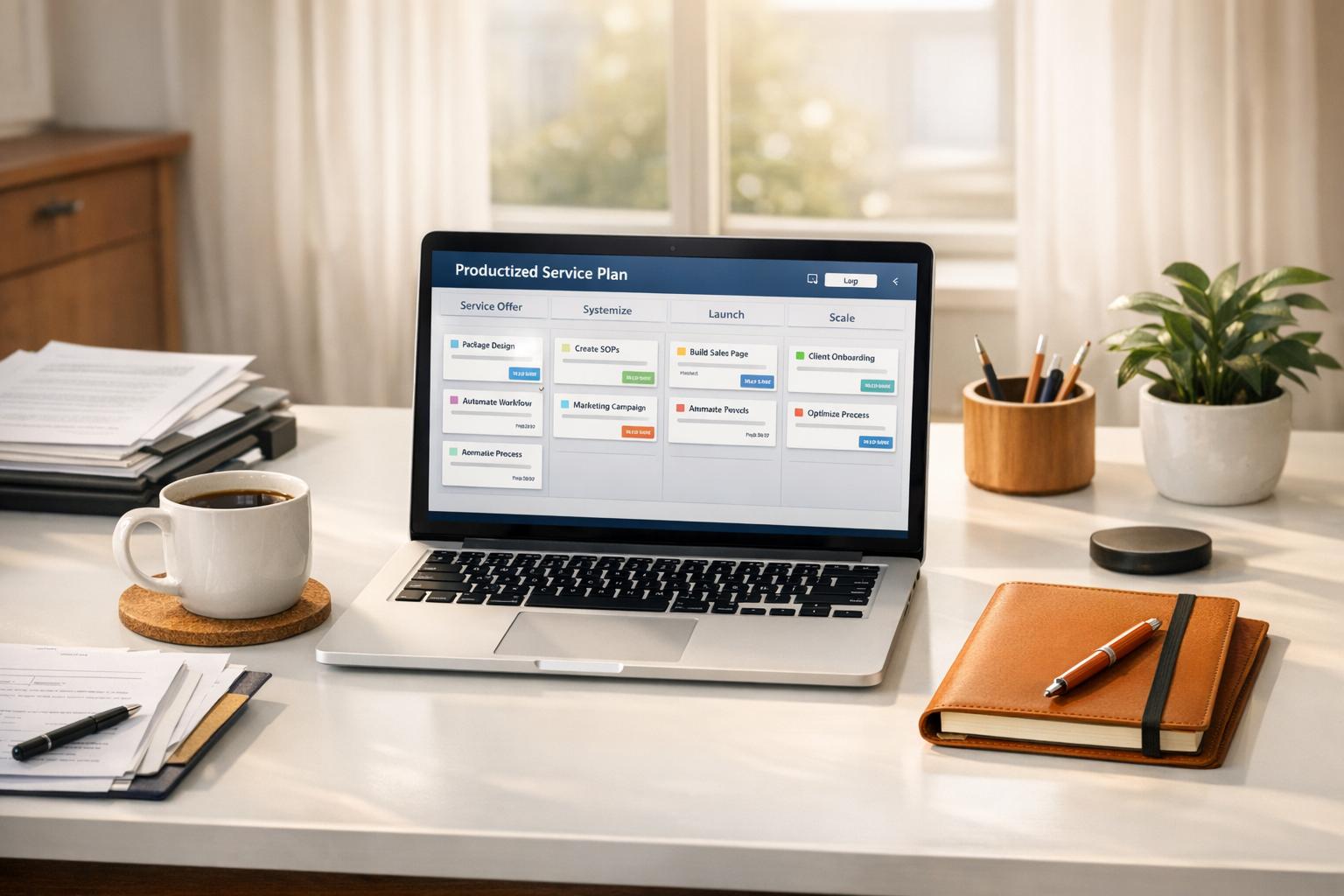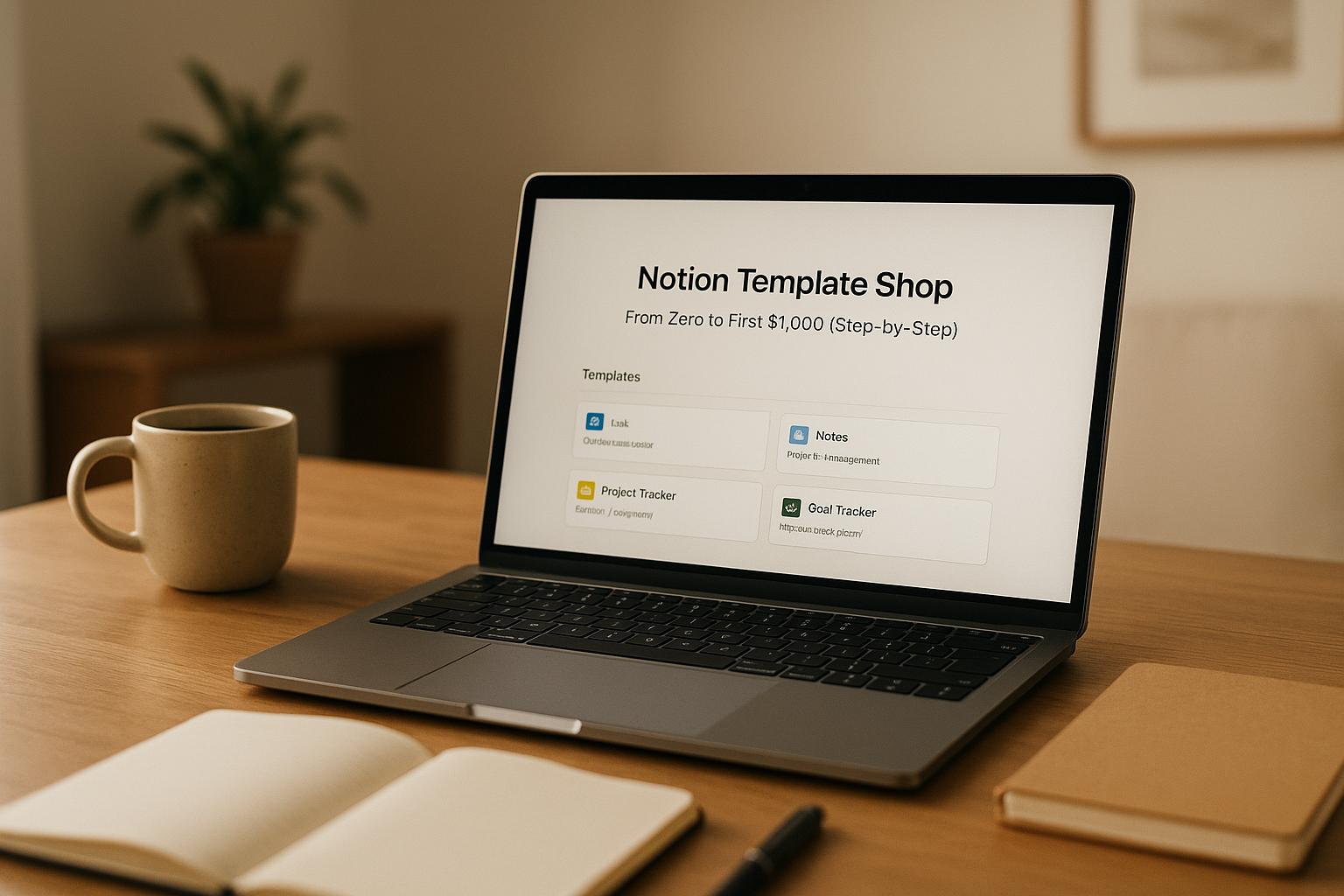
Did you know? Nearly half of small businesses spend over 40 hours a year just handling federal taxes. And mistakes like mixing personal and business finances or missing tax payments can lead to penalties, interest, and audits.
Here’s a quick breakdown of what you’ll learn in this guide to save time and money on taxes:
- Avoid Common Tax Mistakes: Keep personal and business finances separate, make quarterly payments, and maintain proper records to avoid penalties.
- Claim Key Deductions: Deduct home office expenses, business vehicle costs, and up to $5,000 in first-year startup costs.
- Choose the Right Business Structure: LLCs, S-corporations, and sole proprietorships have different tax rules - opt for one that minimizes your tax burden.
- Leverage Tax Credits: Use R&D credits, hiring incentives, and retirement plan credits to reduce your tax bill.
- Plan Income and Expenses: Time income and expenses strategically to lower your taxable income.
- Set Up Retirement Plans: Solo 401(k)s, SEP IRAs, and cash balance plans can help you save for the future while cutting taxes.
Quick Tip: Always consult a tax professional to maximize savings and stay compliant with IRS rules. Let’s dive deeper into these strategies and make tax season less stressful.
10 Small Business Tax Strategies (for the Whole Year)
Essential Tax Deductions for New Business Owners
Tax deductions can make a big difference for your business's finances. Here are three important deductions that new business owners often miss.
Home Office Tax Deductions
If you work from home, the IRS offers deductions for your home office - provided it meets specific requirements. Your workspace must be used exclusively and regularly as your primary place of business. For instance, a spare bedroom that doubles as a guest room won't qualify.
There are two ways to calculate this deduction:
| Method | Details | Best For |
|---|---|---|
| Simplified Option | $5 per square foot (up to 300 sq ft) | Small spaces; less paperwork |
| Regular Method | Actual expenses based on the percentage of your home used for business | Larger offices; higher utility costs |
"The home office deduction allows qualified taxpayers to deduct certain home expenses when they file taxes." - Internal Revenue Service
You can deduct expenses like mortgage interest, insurance, utilities, repairs, and maintenance. Even spaces like detached garages or studios may qualify if they meet IRS guidelines.
Business Vehicle Tax Deductions
If you use a vehicle for business, you can deduct related expenses. For 2025, the IRS standard mileage rate is 70 cents per mile. There are two deduction methods:
- Standard Mileage Rate Method: Track your business miles and multiply by the IRS rate. Keep records of trip dates, purposes, starting/ending locations, and odometer readings.
- Actual Expense Method: Deduct costs like fuel, maintenance, insurance, depreciation, and registration fees.
Using a mileage tracking app can save you about 21 hours a year by automating IRS-compliant logs and separating business from personal travel.
First-Year Business Expense Deductions
New businesses can deduct up to $5,000 in startup costs during their first year, as long as total expenses don’t exceed $50,000. These costs might include market research, advertising, employee training, legal and accounting fees, and business registration.
If startup expenses go beyond $50,000, the IRS requires you to amortize the excess over 15 years after your business starts operating. Keep receipts, invoices, and payment records to back up your deductions in case of an audit.
Tax Impact of Different Business Structures
The business structure you choose directly affects your tax responsibilities and potential savings. By understanding how different structures operate, you can make informed choices that could lead to lower taxes.
S-Corporation Tax Advantages
S-corporations allow you to divide income between a reasonable salary and profit distributions. Here's why this matters: only the salary portion is subject to self-employment taxes. For example, if your business earns $150,000 in profit, you might allocate $75,000 as salary (subject to a 15.3% self-employment tax) and the other $75,000 as a distribution, which avoids this tax. This setup could save you about $11,475 compared to operating as a sole proprietorship.
LLC Tax Classification Options
LLCs offer flexibility in how they are taxed. Depending on your goals, you can choose to be taxed as:
- A sole proprietorship for simplicity
- A partnership for customized profit sharing
- An S-corporation to reduce self-employment taxes (ideal for earnings between $75,000 and $250,000 per owner)
- A C-corporation, which may benefit high-growth startups with lower corporate tax rates
As of 2024, the U.S. has over 20 million registered LLCs compared to about 5 million S-corporations. This flexibility makes LLCs a popular choice for many business owners.
Sole Proprietorship Tax Risks
Operating as a sole proprietorship is simple, but it comes with heavy tax burdens. For 2024, sole proprietors pay:
- A 15.3% self-employment tax on net earnings up to $168,600
- A 2.9% Medicare tax on income above that threshold
- An extra 0.9% Medicare tax on earnings over $200,000 (for single filers) or $250,000 (for joint filers)
To manage these tax challenges, consider these steps:
- Maintain detailed records of income and expenses
- Set aside funds for quarterly estimated tax payments
- Open a retirement plan like a SEP or SIMPLE IRA
- Evaluate switching to an LLC or S-corporation if your profits consistently exceed $75,000
As your business grows, reassess your structure to ensure it aligns with your financial goals.
sbb-itb-08dd11e
Tax Credits for Small Businesses
After exploring deductions and structuring options, tax credits provide another way to cut down on taxes. Unlike deductions, tax credits directly reduce your tax bill dollar-for-dollar, making them an effective tool that many new business owners tend to miss.
Small Business R&D Tax Credits
The Research and Development (R&D) tax credit is designed for businesses that develop new products or improve existing processes. Startups with less than $5 million in gross receipts can use up to $500,000 in R&D credits to offset payroll taxes.
To qualify, your research must meet these criteria:
- It results in new or improved business components.
- It addresses technical uncertainty based on hard sciences.
- It involves systematic experimentation.
For example, Heckler Design claimed over $380,000 in R&D credits for developing and testing specialized manufacturing and shipping software. On average, businesses claimed about $30,000 in R&D credits for the 2023 tax year.
Hiring Tax Credits (WOTC)
The Work Opportunity Tax Credit (WOTC) has been extended through December 31, 2025. This credit encourages businesses to hire individuals from specific target groups. Here's how it works:
- Standard credit: 40% of first-year wages (up to $6,000, max $2,400) for employees working 400+ hours.
- Reduced credit: 25% for employees working 120–399 hours.
- For certain veterans, credits can be calculated on up to $24,000 in wages.
Small Business Retirement Plan Credits
Offering retirement plans not only helps attract and retain employees but also earns tax credits. The Credit for Small Employer Pension Plan Startup Costs provides a credit equal to the greater of $500 or $250 per eligible employee, up to $5,000.
"Saving on taxes not only enhances the cash flow and profitability of businesses, but also allows companies to serve as economic engines and providers of crucial employment opportunities within their communities."
Make sure to document all qualifying activities, file Form 3800 when claiming multiple credits, submit certifications on time, and consult a tax professional to ensure you claim all eligible credits.
Tax Planning Through Income Timing
Timing your income and expenses can make a big difference in how much you owe in taxes. Just like using deductions and structuring your finances wisely, planning when to recognize income and expenses is a key part of effective tax planning.
Strategies to Defer Income
If you're a cash-basis taxpayer, you only need to report income in the year you actually receive it - whether that's cash or a check. Here are a few ways to defer income:
- Delay invoicing: Hold off on sending invoices late in the year if you don’t need the payment right away.
- Adjust payment terms: Negotiate terms that push taxable income into the next year.
- Schedule contract completions: Time project completions to control when income is recognized.
Deferring income can be especially useful if you expect to be in a lower tax bracket next year. This approach also helps set the groundwork for maximizing deductions by timing your expenses effectively.
Planning Year-End Expenses
Prepaying certain expenses, like business insurance or office rent, can help you lock in deductions for the current year. For example, paying January's rent in December lets you claim that deduction on this year’s tax return.
| Expense Type | Timing Strategy | Tax Impact |
|---|---|---|
| Business Insurance | Pay for next year’s coverage | Deduct immediately |
| Office Rent | Pay January rent in December | Deduct in the current year |
"The tax rules that govern the correct year to report income and deductions can be complex and you should be sure to coordinate your strategy with your certified public accountant (CPA) well in advance of year end."
– Vinay Navani, Accountant, WilkinGuttenplan
Choosing the Right Tax Year
In addition to timing income and expenses, selecting the right tax year can further refine your approach. A calendar year runs from January to December, while a fiscal year aligns with your business's unique cycle.
Advantages of a Calendar Year:
- Easier to manage record-keeping
- Matches your personal tax year
- May be required for sole proprietors and partnerships
Advantages of a Fiscal Year:
- Matches seasonal business patterns
- Provides planning opportunities during slower periods
- Syncs with your business operations
For example, if your business has a slow season, ending your fiscal year during that time can make year-end planning less stressful.
Business Retirement Plans for Tax Reduction
Planning for retirement not only secures your future but also helps reduce your tax liability.
Solo 401(k) Tax Benefits
A Solo 401(k) is a great choice for business owners without employees (except a spouse). This plan allows contributions as both the employer and the employee, offering significant tax-saving opportunities.
For example, a 54-year-old S Corporation owner earning $100,000 in W‑2 wages could contribute up to $55,500 to a Solo 401(k). This amount includes a $23,000 employee deferral, a $7,500 catch-up contribution, and a $25,000 employer profit-sharing contribution, all of which reduce taxable income.
Key features include:
- Pre-tax and Roth options
- Loan provisions
- Flexible contribution schedules
- Annual reporting required only for balances above $250,000
SEP IRA Tax Savings
SEP IRAs offer a simple way to lower taxes and are well-suited for businesses with variable profits or a small number of employees. Employers can contribute up to 25% of wages or $69,000 (whichever is lower) for 2024.
| Feature | SEP IRA | Solo 401(k) |
|---|---|---|
| Maximum Contribution (2024) | $69,000 | $69,000 (or $76,500 if age 50+) |
| Contribution Type | Employer only | Both employer and employee |
| Loan Provisions | Not available | Available |
| Setup Complexity | Simple | More complex |
| Annual Reporting | Required for all accounts | Only if balance exceeds $250,000 |
For business owners with higher incomes, there’s another option to consider for even larger deductions.
Cash Balance Plans for Tax Savings
Cash balance plans are designed for high-income earners who want to maximize their tax savings and complement other retirement plans.
The SECURE 2.0 Act introduced additional tax incentives for small business retirement plans:
- Startup cost credits for the first three years
- Employer contribution credits up to $1,000 per employee
- An extra $500 annual credit for automatic enrollment plans (EACA)
Tax credits for small businesses with 50 or fewer employees are structured as follows:
| Credit Type | Years 1–3 | Years 4–5 |
|---|---|---|
| Startup Costs | $5,000/year | N/A |
| Employer Contribution | $50,000/year | Decreasing scale |
| Auto-Enrollment (EACA) | $500/year | N/A |
Selecting the right retirement plan tailored to your business needs can significantly improve your tax savings strategy.
Conclusion: Steps to Implement Tax Savings
To make the most of the tax strategies outlined earlier, follow these steps to secure your financial future.
Start by formalizing your business structure. This decision lays the groundwork for future tax opportunities. Consult with a tax professional to determine whether an LLC, S-Corporation, or sole proprietorship aligns best with your needs.
Here’s a breakdown of the process:
| Implementation Phase | Key Actions | Professional Support Needed |
|---|---|---|
| Initial Setup | Choose business structure, register tax ID | Tax attorney, CPA |
| Planning | Set up retirement plans, develop deduction strategies | Financial advisor, CPA |
| Ongoing Management | Maintain records, calculate quarterly estimates | Accountant |
| Annual Review | Assess strategies, stay updated on tax laws | CPA, tax advisor |
By working through these phases - from structuring your business to conducting annual reviews - you’ll ensure a well-rounded approach to tax optimization.
Keep separate accounts, meticulously track expenses, and organize your financial documentation. This precision not only maximizes deductions but also ensures compliance.
"If you're an S corporation or LLC, be sure to speak with your tax advisor about your state's policies." - Vinay Navani, tax accountant, WilkinGuttenplan
Additionally, collaborating with a qualified tax professional can help you:
- Design efficient employee benefit packages.
- Identify all eligible credits and deductions.
- Provide guidance on income timing.
- Optimize your business structure.
- Stay updated on tax law changes.
Regular consultations with tax experts go beyond ensuring compliance - they’re key to strategic planning. As Iota Finance puts it, "We don't just manage taxes – we master them. Our team of tax wizards approach small business taxes as strategic opportunities".
Schedule quarterly reviews of your tax strategy to stay ahead. These check-ins allow you to adjust based on your business’s performance and take advantage of any new tax-saving opportunities that come your way.
Related Blog Posts
Get the newest tips and tricks of starting your business!


